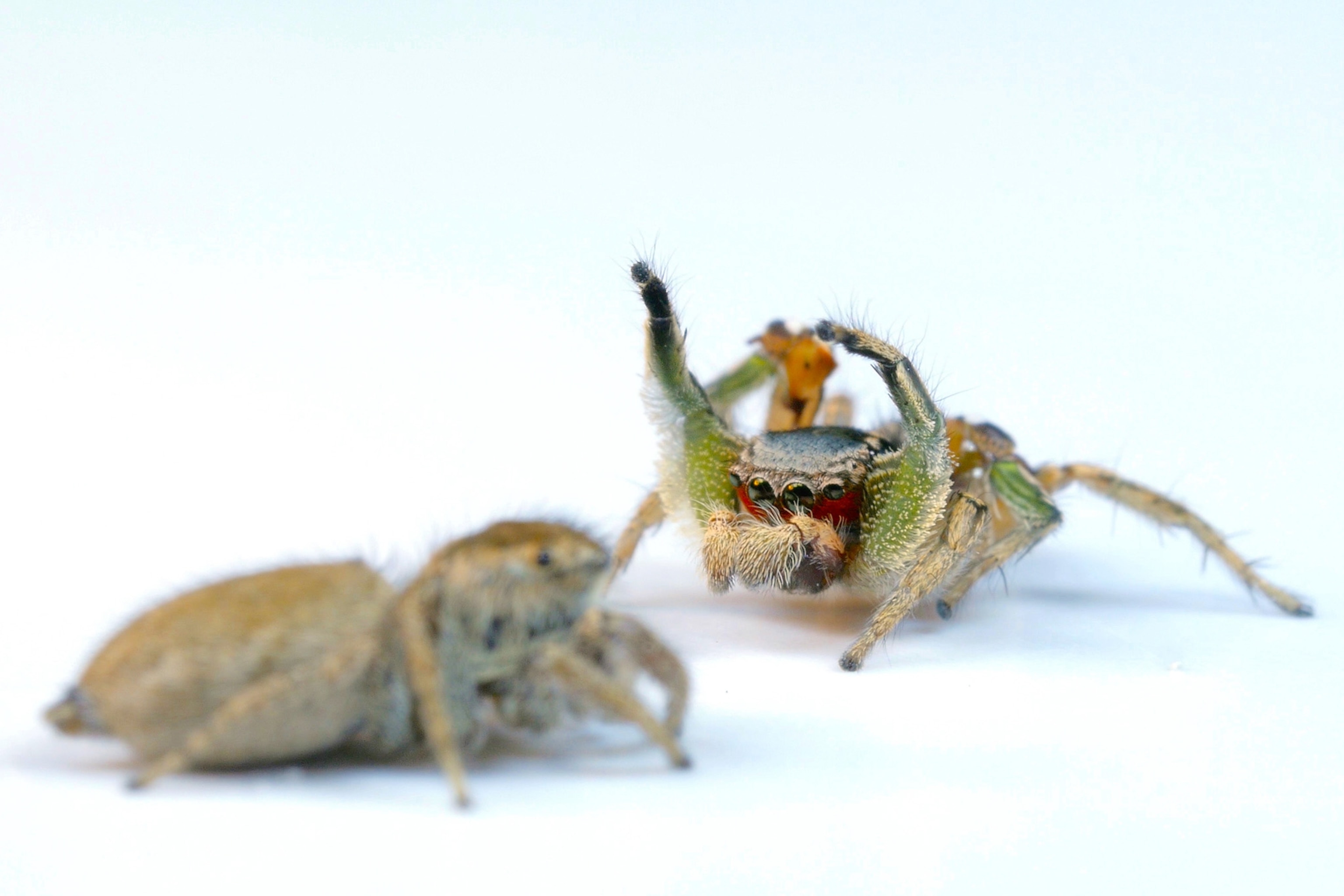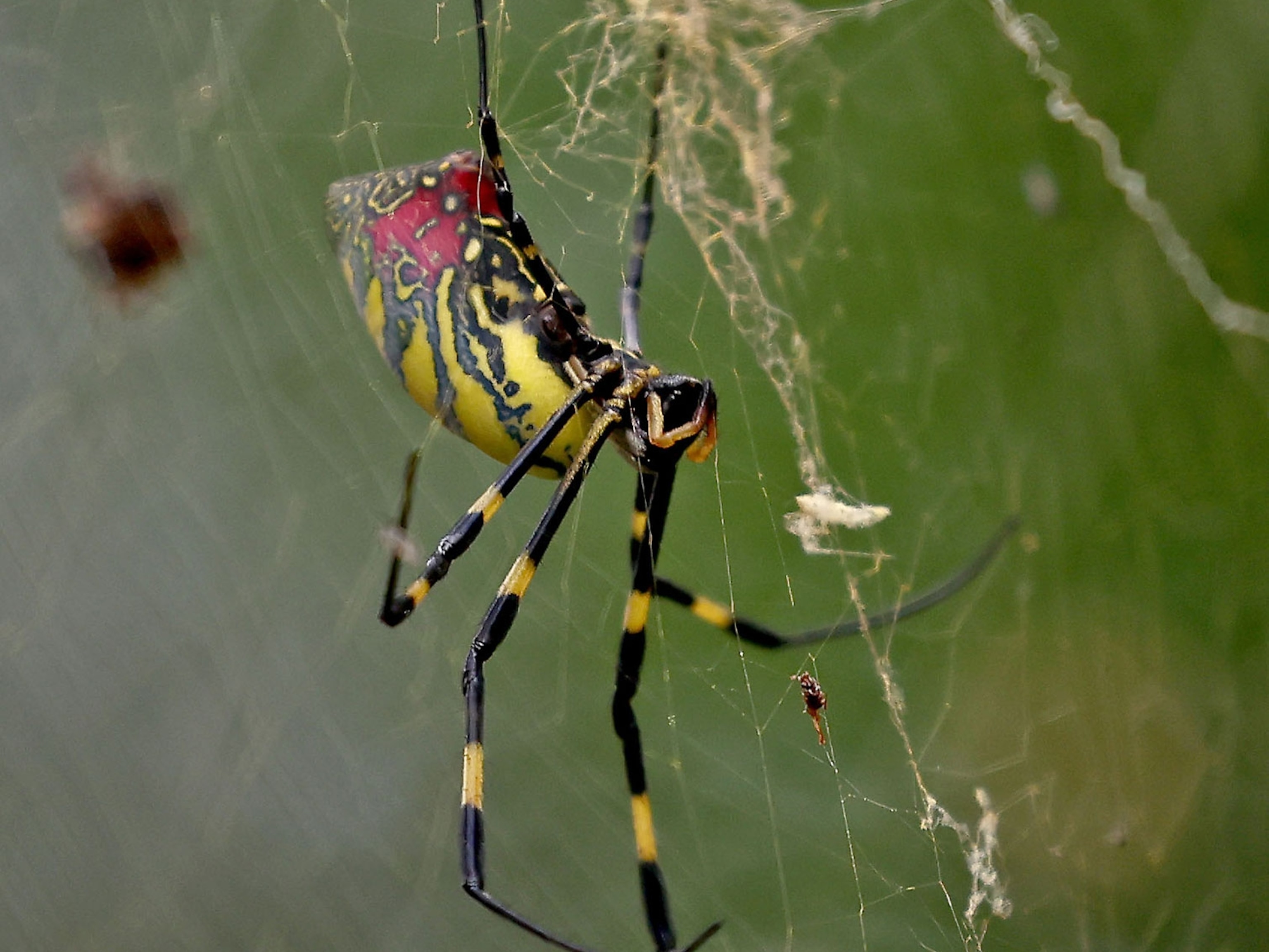
Surprise: Jumping Spiders Can See More Colors Than You Can
Some species of jumping spiders use filters in their eyes to see colors like red and orange—an unexpected discovery.
The flamboyant colors and flash dance routine of some male jumping spiders are meant to seduce females—which means that these species must be able to see those fire-engine reds and bright greens.
Yet it's remained something of a mystery as to how their eyes perceive certain colors.
Scientists already knew that some jumping spiders, like Habronattus pyrrithrix, could see green and ultraviolet (UV) light through two of their eight eyes. Researchers presumed they could also see reds and oranges—why else would the males bear patches of the fiery colors? But now, based on experiments with H. pyrrithrix scientists know exactly how these tiny spiders do it. They use filters.
The arachnids have red filters that sit in front of cells in their eyes that normally detect green light, researchers report online May 18 in the journal Current Biology. The effect is similar to the gels placed in front of theater lights to get different colors on a stage. Although, in the spiders' case, they can't remove their red filters, which are made of a type of pigment.
With these built-in filters, H. pyrrithrix gains a third color channel through which to see the world. (Read about other colorful spiders, Sparklemuffin and Skeletorus.)
"In principle, they can see an even broader spectrum of colors than we can," says Nate Morehouse, an evolutionary biologist at the University of Pittsburgh in Pennsylvania. This is because H. pyrrithrix "are sensitive not only to the spectrum of colors visible to us, but also to the UV," explained the study co-author.
Trade-offs
Usually, animals the size of H. pyrrithrix have to make tradeoffs between sight and the spatial resolution and sensitivity of their eyes, says Daniel Zurek, a sensory ecologist at the University of Pittsburgh in Pennsylvania.
All the equipment necessary for the kind of sight people enjoy—like specialized cells that pick up more than two colors—just won't fit in eyes the size of a spider's. (Read about some small spiders whose brains spill into their legs.)

But jumping spiders have found ways around those typical tradeoffs. They've broken up the duties that a single pair of eyes performs in people and distributed them among four pairs of eyes.
"Spiders have eight eyes that are specialized," says Morehouse, some of which detect motion or garner wide-angle views of the surroundings.
Their new study focused on H. pyrrithix's central pair of eyes, which are adapted for seeing patterns and color. The researchers used multiple techniques to study these eyes, including slicing them into thin sections and examining the slices with sensitive microscopes to discover the filters.
Those filters were completely unexpected, says Zurek.
What's Old is New
"It's a sweet way of solving the problem," says Gil Menda, a neuroethologist at Cornell University in Ithaca, New York, who was not involved in the study.

It's not unknown to science, he says. Birds and reptiles use filters made out of oil droplets to see colors. Butterflies also employ a filter system.
But as far as Zurek and Morehouse know, this is the first time filters have been seen in spider eyes. (Watch a jumping spider stalk a bee.)
Menda says that this work will open up all kinds of questions for scientists. He looks at how processes in the brain produce certain behaviors in animals. Now that researchers know certain jumping spiders can see red, it could be interesting to see how a spider's brain processes this information.
"We're really at the beginning of explaining" color vision in these spiders, says Zurek.
Follow Jane J. Lee on Twitter.





